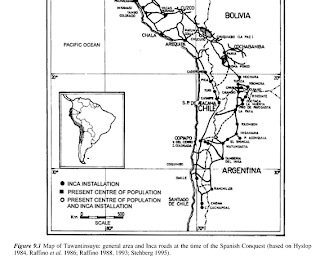Meeting of the International Technical Secretaries of the” Qhapaq Ñan, Andean Road System” - project nomination to the World Heritage list of UNESCO Paris 16-18 February of 2011.
Program Qhapaq Ñan has its origin in the year 2001, when the government of Peru has began to promote the multilateral postulation of the “Inca Trail” as a World Heritage site to UNESCO. The initiative was seconded by the governments of Argentina, Bolivia, Ecuador, Colombia and Chile, which soon after have begun coordinating the program with the support from UNESCO and others. The February 2011 meetings were initiated by Mr Francesco Bandarin, Director of Culture and of the Center of the World Heritage at UNESCO, and Chile was represented and its work has been coordinated by the Executive Secretary of the Council of National Monuments (SE-CMN) Mr. Oscar Acuña.
The term “Qhapaq Ñan”, which in quechua means "Main road", is used to refer to the extensive road network which enabled the expansion of the Tawantinsuyu (Inca State) into the territories which now correspond to the Andean nations of Colombia, Ecuador, Bolivia, Peru, Argentina and Chile. It covers an distance of approx. 6,000 km in the North - South direction and encompasses over 33,000 km of built-in road and trail infrastructure.
Known in Peru as “Great Inca Road” and in other countries as “an Andean Road”, Qhapaq Ñan is articulated in a form of a network of roads and infrastructure built more than two thousand years preceding the Inca’s forceful incorporation of various Andean cultures and connecting their production, administrative and ceremonial centers. Qhapaq Ñan has formed a network at the continental level which expresses most essentially the organizational spirit linking cultures inextricably associated with the most extreme environments of the planet.
The international project of Qhapaq Ñan is the most relevant in the field of cultural heritage of the region; constituting also a comprehensive, exemplary initiative and great vision, not only to protect the heritage of outstanding universal value, but also to achieve a sustainable social development preferably to the benefit of the indigenous communities. This heritage project also has a strategic factor which without precedent, is capable of strengthening relations between the involved countries.

No comments:
Post a Comment